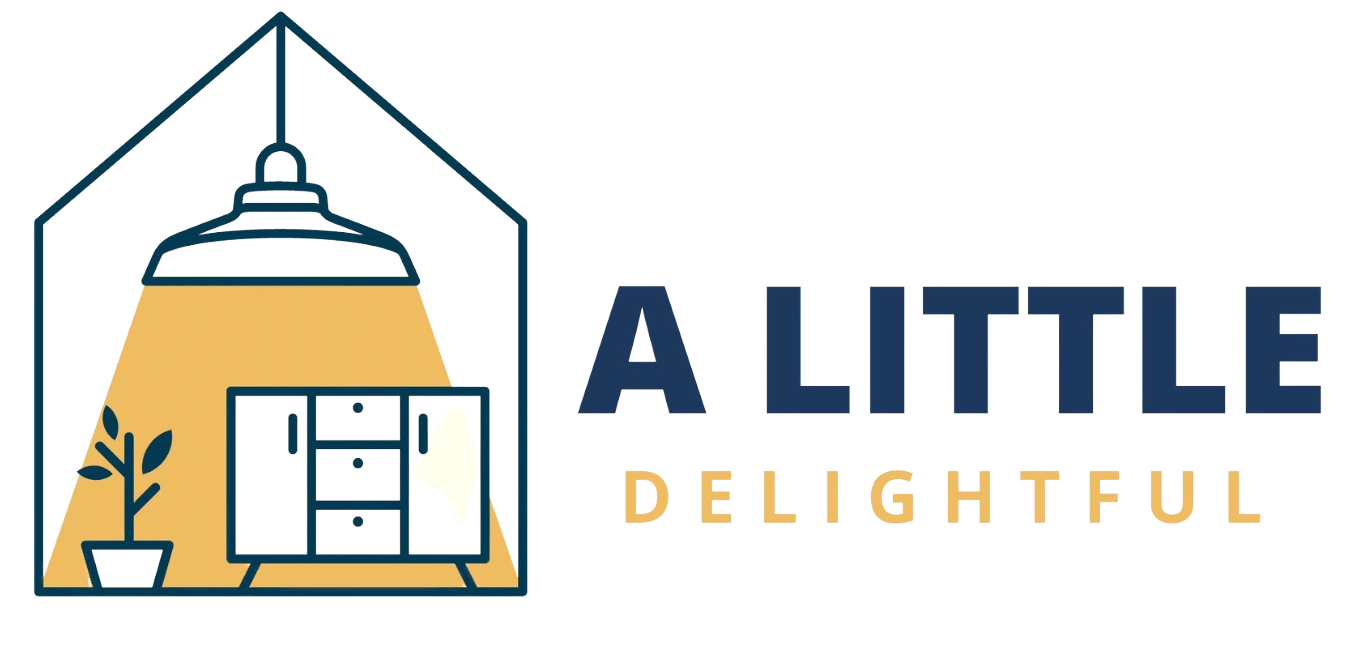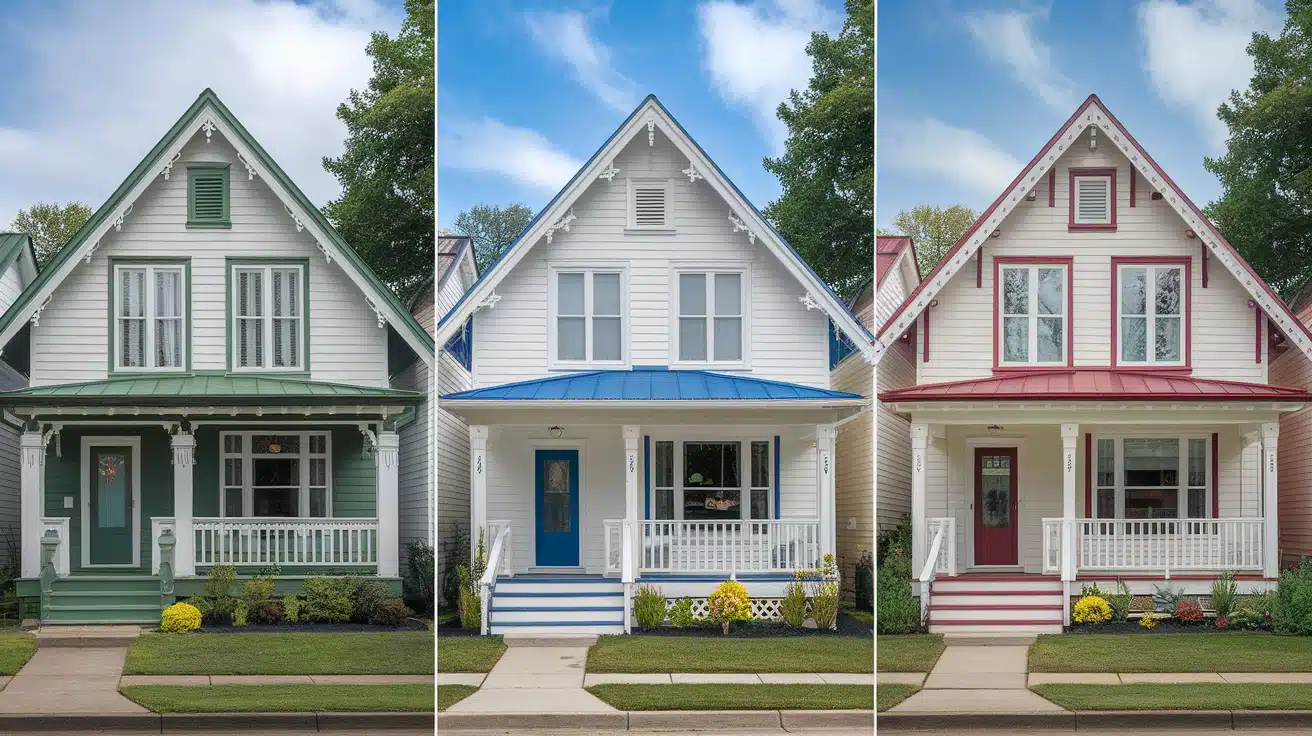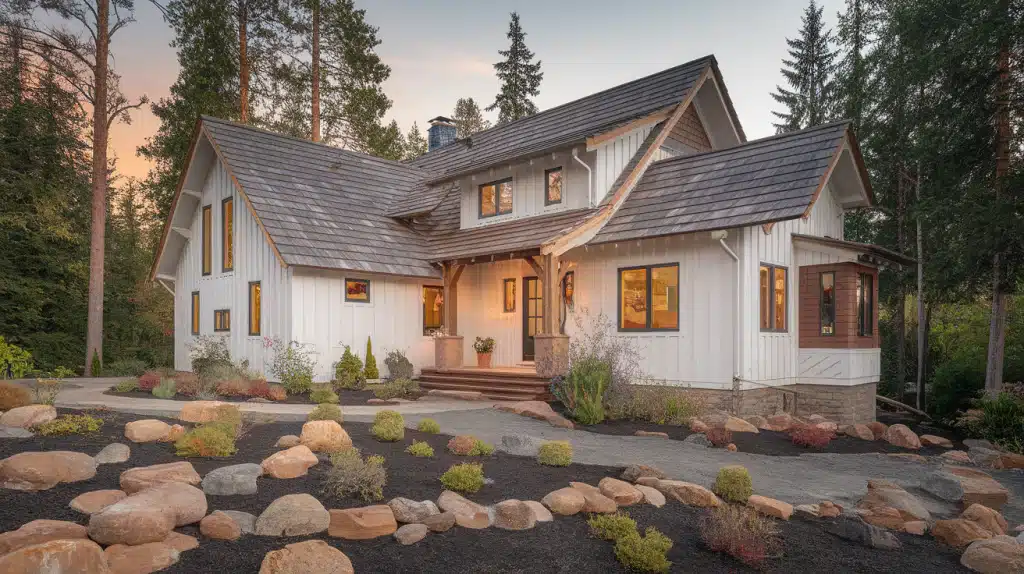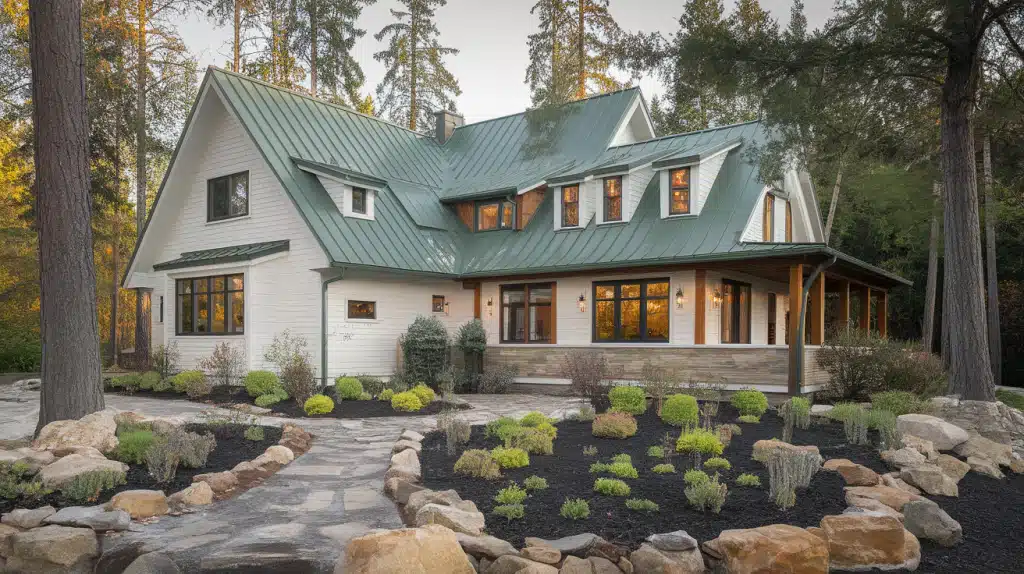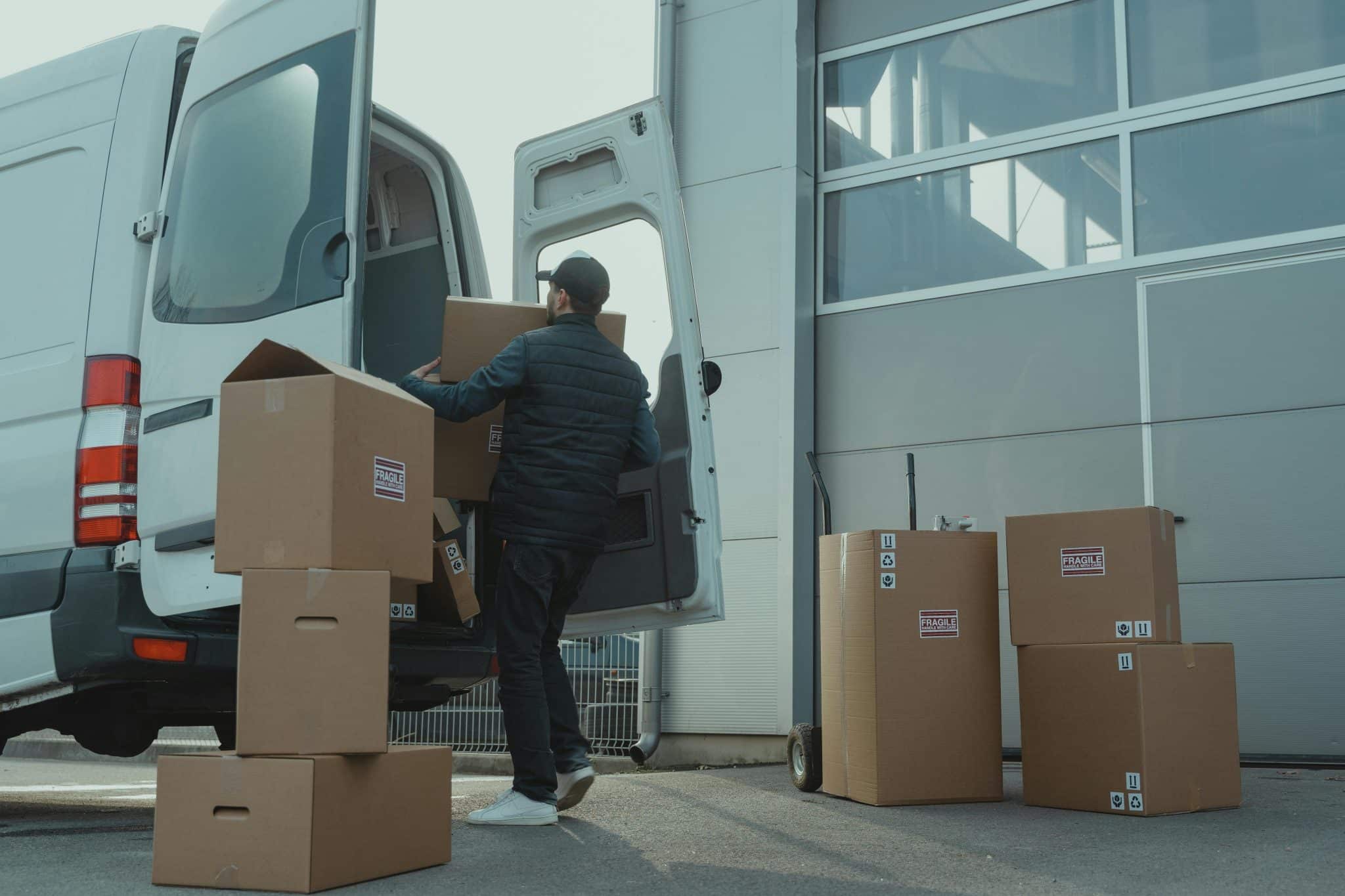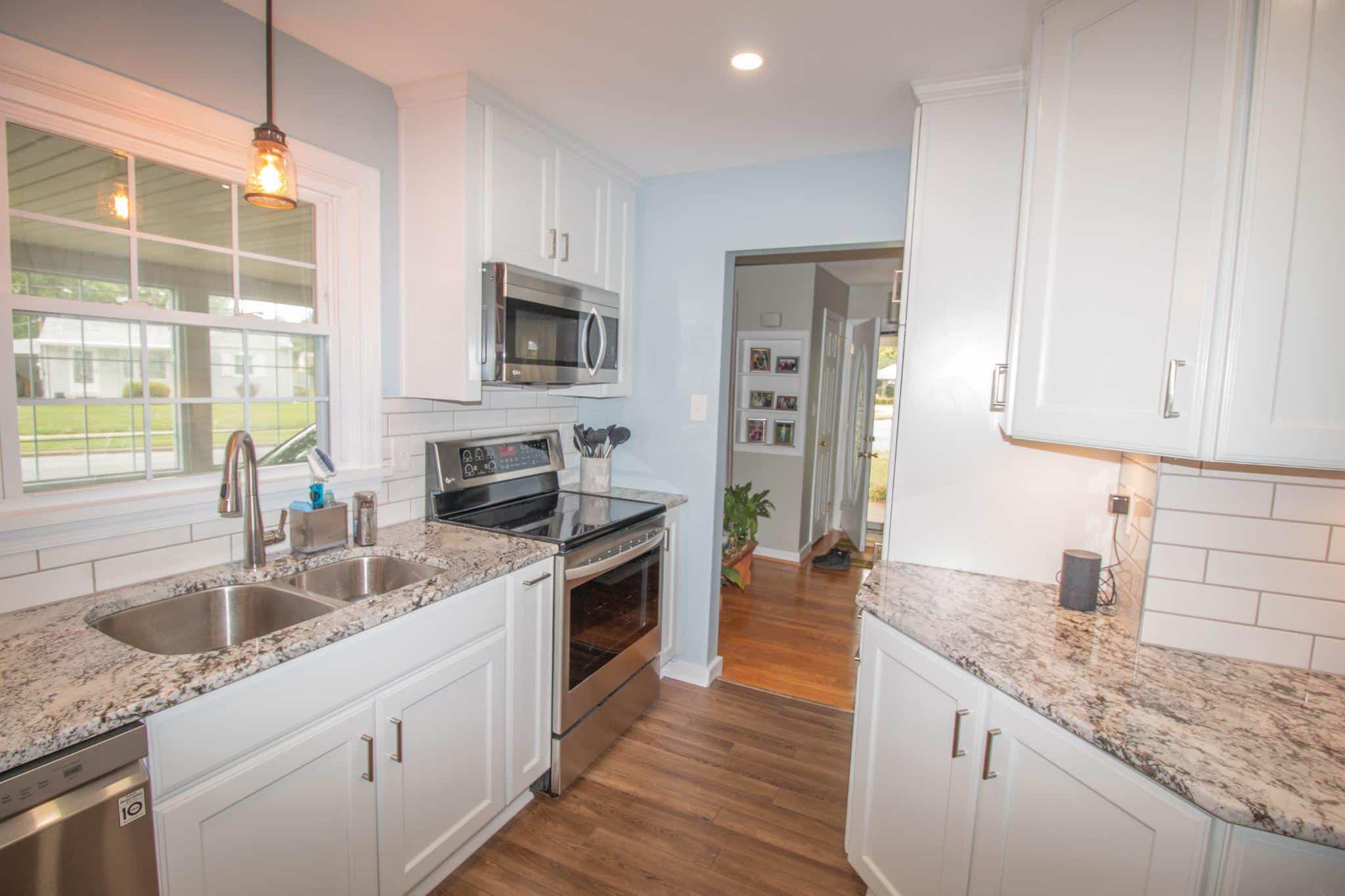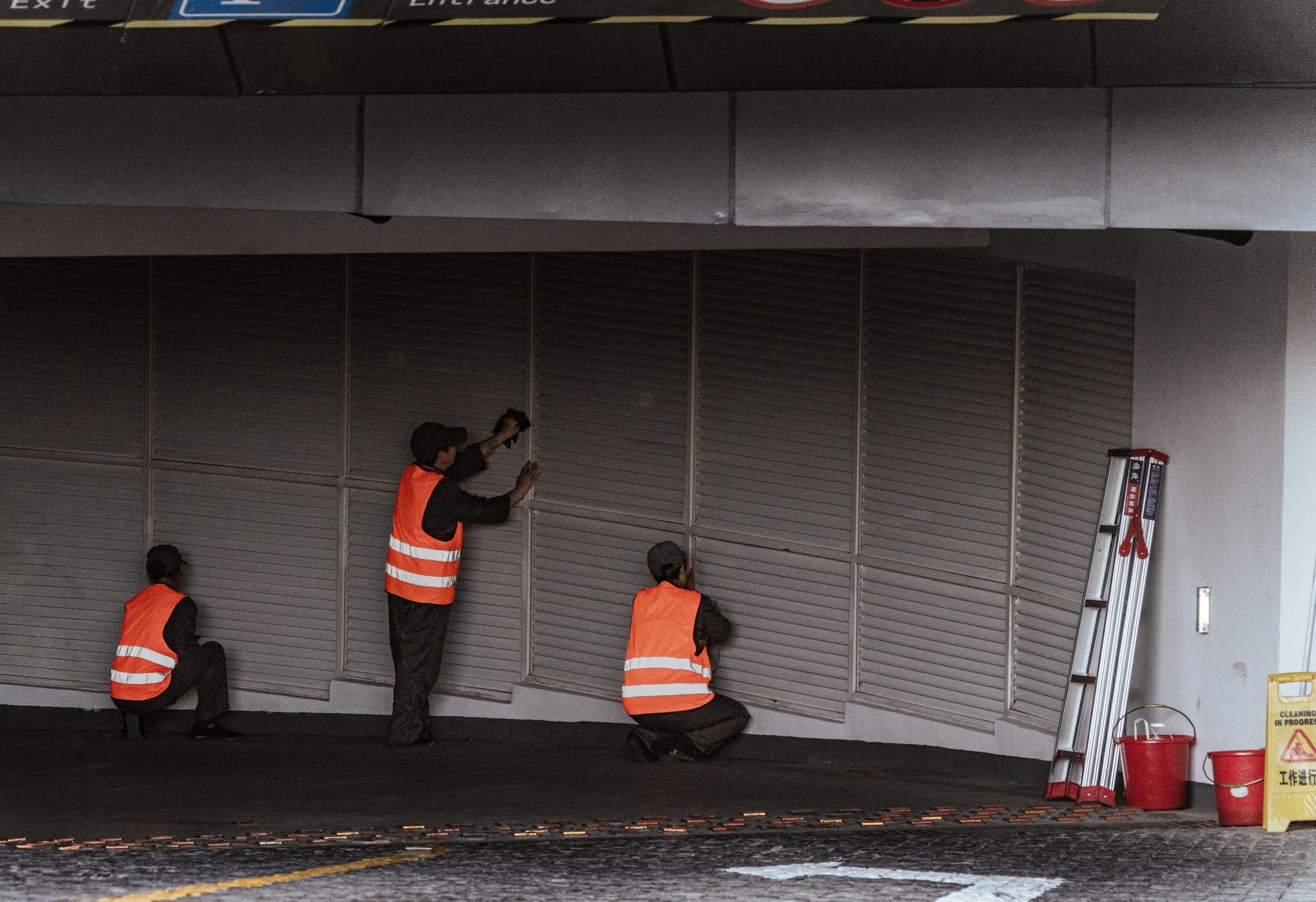White houses offer timeless appeal, but choosing the right roof color can significantly impact your home’s curb appeal.
Your roof covers nearly 40% of your exterior view, making it one of the most important design decisions you’ll face.
The perfect roof color does more than look good. It boosts your property value, improves energy efficiency, and creates harmony with your neighborhood.
From classic black to bold navy, each shade tells a different story about your home’s personality.
Smart homeowners know that pairing roof colors with the magic of white houses creates incredible results. The right combination can turn an ordinary house into the envy of the block.
Ready to find your perfect match? Let’s explore the best roof colors that will make your white house shine.
Why Roof Color Matters for a White House?
Your roof color choice goes far beyond simple looks. It shapes how your entire home appears from the street and affects both your wallet and comfort year-round.
Here’s why your decision matters so much:
- Curb appeal: The roof covers nearly 40% of your home’s visible exterior. The right shade either highlights or softens your home’s architecture.
- Resale value: Color harmony can increase buyer confidence and boost offers when it’s time to sell.
- Energy efficiency: Light roofs reflect heat while darker ones absorb it, a key factor in climates with extreme seasons.
8 Best Roof Colors for a White House
Your roof choice can make a white house feel bold, warm, or timeless. These eight colors stand out for their curb appeal, versatility, and long-term value.
1. Classic Black or Charcoal
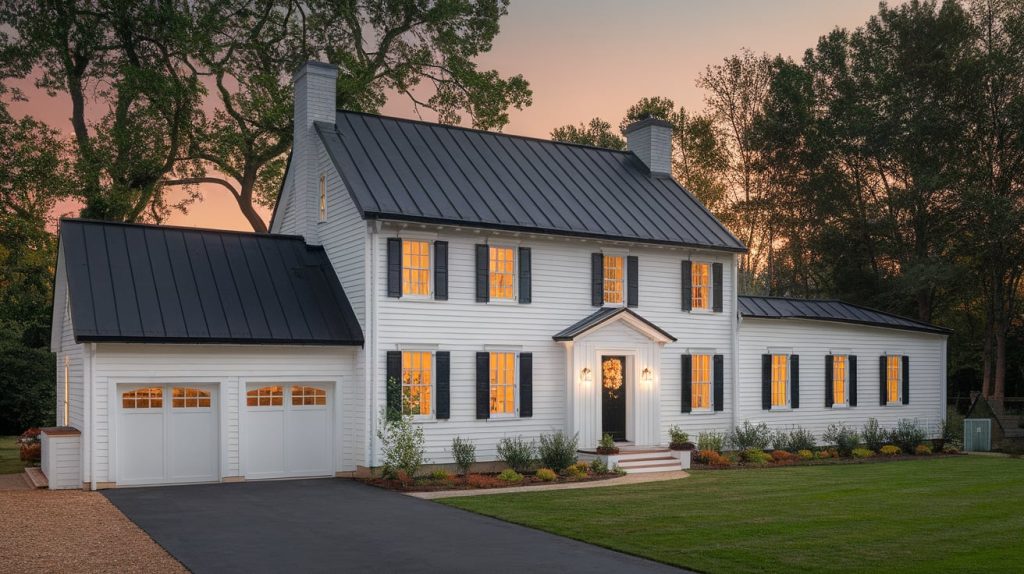
Black and charcoal roofs create bold contrast against white siding, making trim and windows pop with definition. This classic combination never goes out of style and works across decades of design trends.
Great for colonial and modern farmhouse designs, these dark tones add refined drama to any home. The high contrast also helps define architectural features that might otherwise blend together.
- Best For: Colonial homes, modern farmhouses, traditional architecture
- Climate Consideration: Absorbs heat – ideal for colder regions
- Maintenance: Hides dirt well but shows debris clearly
2. Cream/Off-White
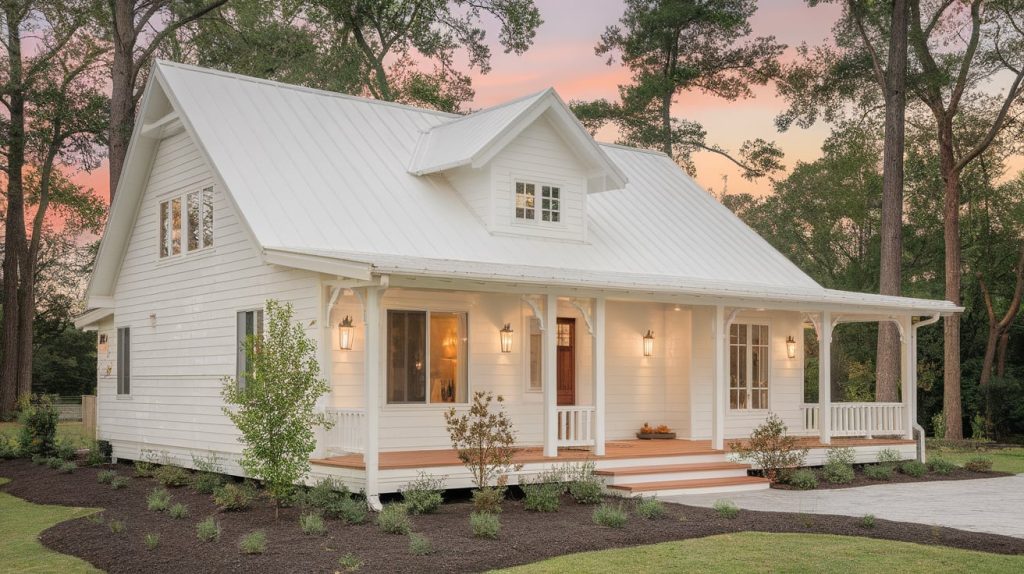
Subtle and harmonious, cream creates a soft, monochromatic look that’s both gentle and cultivated.
This understated shade works especially well with cottage-style homes or minimalist architecture, where you want a seamless flow between the roof and siding.
Cream roofs reflect maximum heat while creating a cohesive, peaceful appearance that feels larger and more open.
They pair beautifully with white trim and complement accent colors like soft pastels, natural wood, or muted earth tones.
- Best For: Cottage-style homes, minimalist designs, small properties
- Climate Consideration: Excellent heat reflection, perfect for hot, sunny climates
- Maintenance: Shows dirt and stains easily, but creates a timeless appeal
3. Light Gray
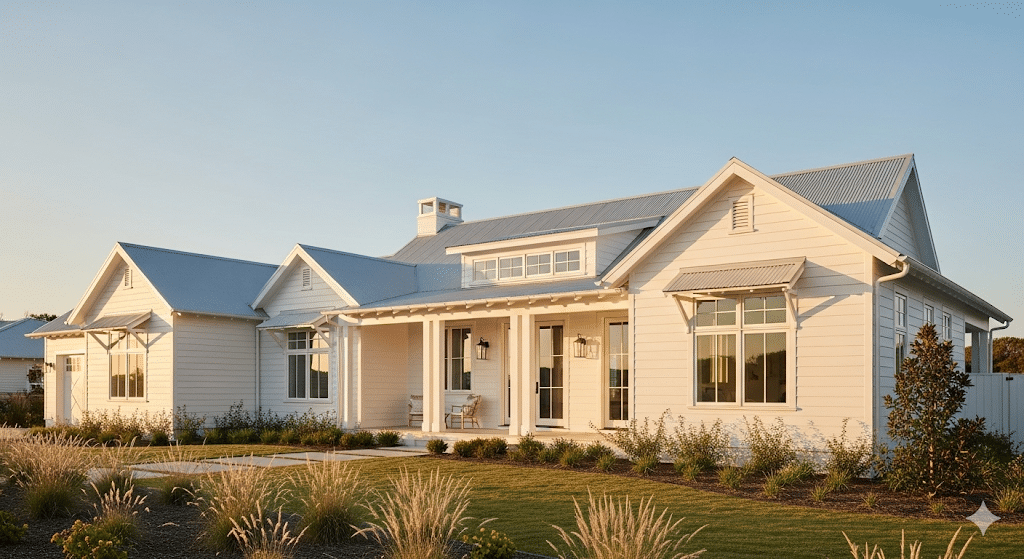
Soft and coastal-inspired, light gray brings a clean, airy feel that’s both modern and timeless.
This gentle shade works especially well with seaside cottages or minimalist architecture where harsh contrasts feel too strong.
Light gray roofs reflect more heat than darker options, making them practical for warmer climates. They also pair beautifully with white trim and soft accent colors, such as sage or pale blue.
- Best For: Coastal cottages, minimalist homes, contemporary designs
- Climate Consideration: Reflects heat, great for hot climates
- Maintenance: Shows dirt more easily, but is weather-resistant
4. Warm Browns
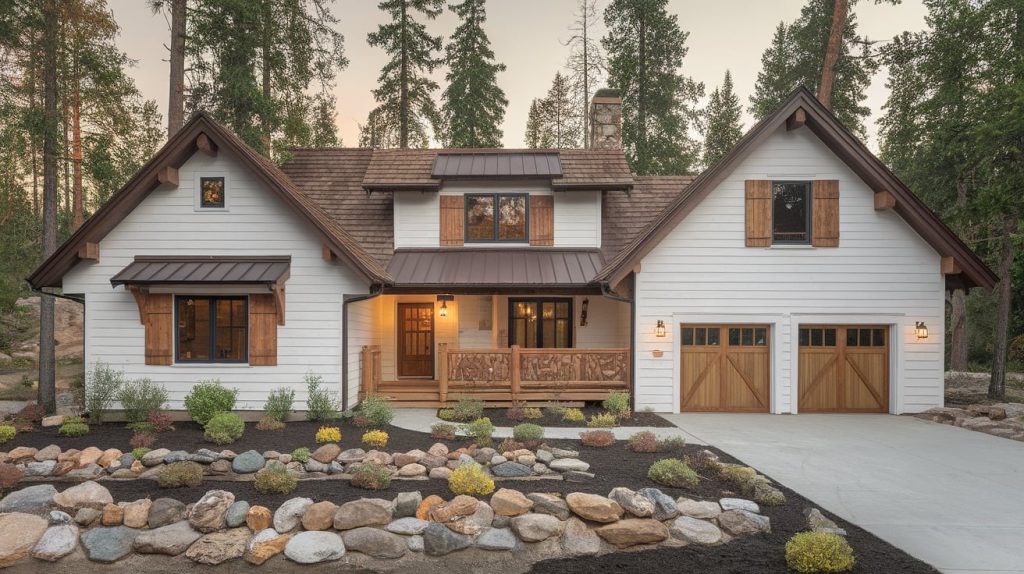
Earthy brown tones provide a cozy, natural ambiance that makes homes feel warm and inviting. These shades work beautifully with rustic landscaping and natural stone accents around the foundation.
Brown roofs complement wooden shutters, natural trim, and earth-tone paint colors on doors or garage areas.
They’re especially popular in wooded settings, where the roof can blend seamlessly with the surrounding tree canopies.
- Best For: Ranch homes, rustic cabins, homes with natural stone
- Climate Consideration: Moderate heat absorption, suitable for most areas
- Maintenance: Excellent at hiding dirt and debris
5. Weathered Wood or Cedar Shades
Shingles in weathered wood or cedar shades add depth and natural texture to your home’s profile. These hues are especially suited for ranch and cabin-style houses where rustic charm is the goal.
The varied tones within wood-style shingles create visual interest and help break up large roof areas, adding to the overall aesthetic.
This option works particularly well with stone accents and natural landscaping elements.
- Best For: Cabin-style homes, ranch houses, rustic designs
- Climate Consideration: Natural materials perform well in most climates
- Maintenance: Requires regular inspection for weather damage
6. Terracotta or Red Clay
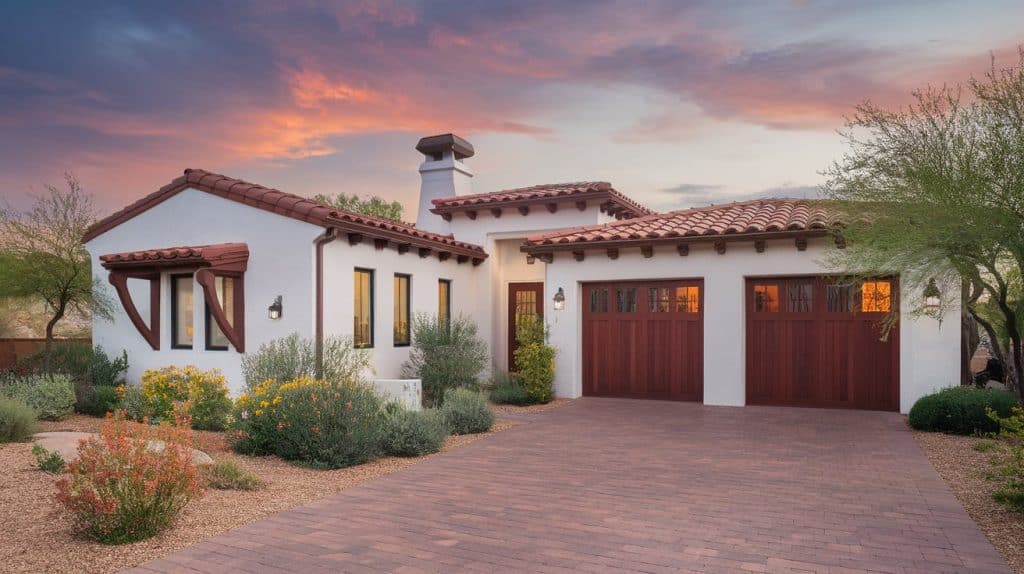
Terracotta roofs add Mediterranean warmth and create a bold, sunny appearance that works well in bright climates.
Their rich color pairs beautifully with stucco accents and white siding for a classic southwestern or Spanish-inspired look.
These warm tones complement desert landscaping and work well with wrought iron details or earth-tone trim. The color also helps homes stand out in neighborhoods filled with gray and black roofs.
- Best For: Spanish-style homes, southwestern architecture, stucco exteriors
- Climate Consideration: Excellent for hot, sunny climates
- Maintenance: Durable material with good weather resistance
7. Bold Dark Blue or Navy
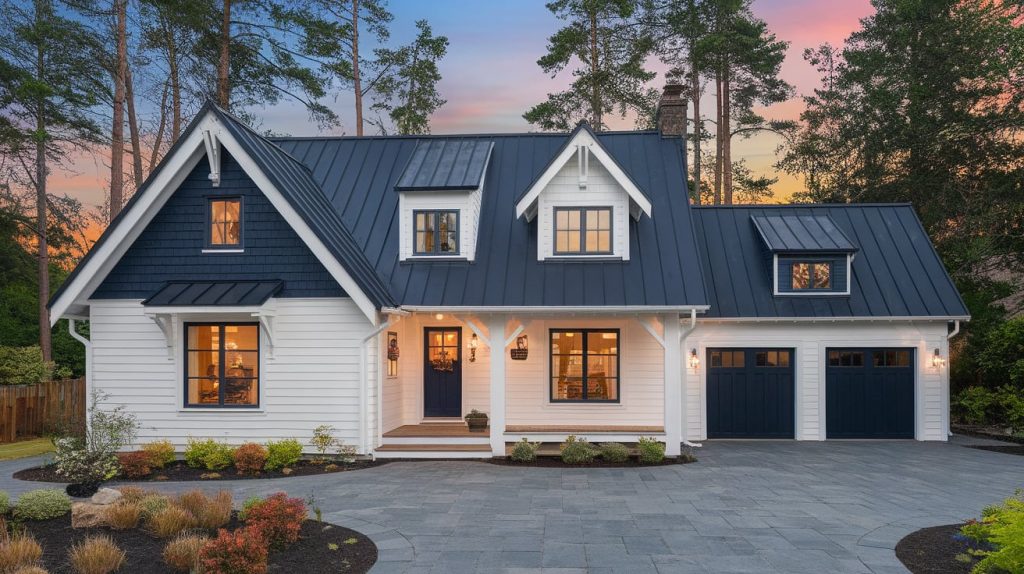
Dark blue or navy roofing creates unique curb appeal while maintaining enlightenment and class. This bold choice works well with coastal themes, nautical decor, and crisp white trim details.
Navy roofs pair beautifully with brass or copper accents and look great with both traditional and contemporary architectural styles.
The deep color adds richness without being as stark as black options.
- Best For: Coastal homes, nautical themes, contemporary designs
- Climate Consideration: Absorbs heat, better for moderate to cool climates
- Maintenance: Shows wear patterns but ages gracefully
8. Forest Green or Moss Green
Perfect for wooded lots or nature-inspired homes, green roofs blend beautifully with natural landscaping and tree coverage.
These earth tones work especially well with homes surrounded by mature trees or extensive garden areas.
Forest green complements stone accents, wooden trim, and natural building materials throughout the property. The color also helps larger homes feel more integrated into their natural surroundings.
- Best For: Wooded properties, nature-inspired homes, large lots
- Climate Consideration: Moderate heat absorption, works in most regions
- Maintenance: Blends with natural debris, making cleaning less obvious
How to Choose the Right Roof Color?
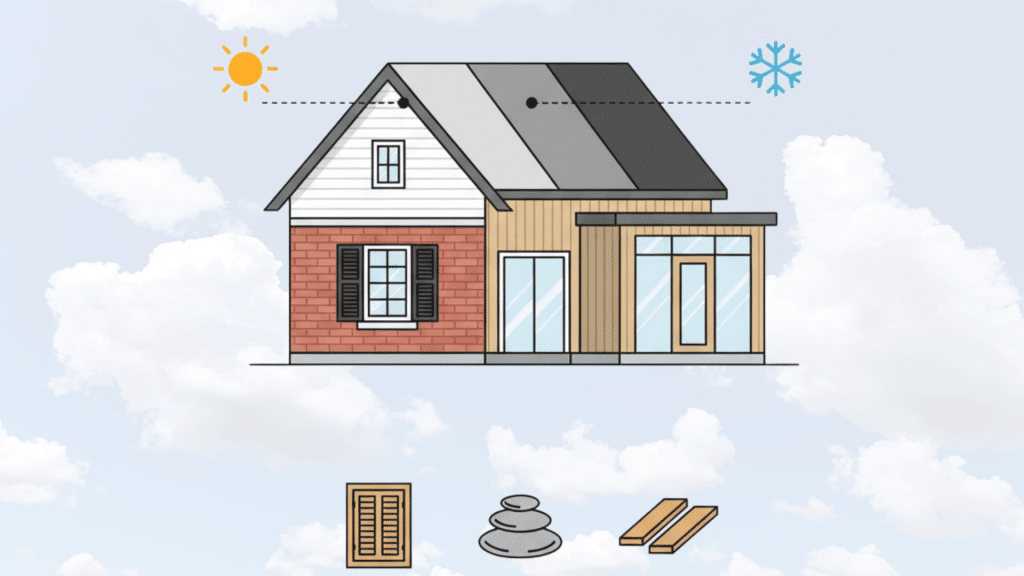
Selecting the perfect roof color for your white house requires careful consideration of several key factors. Your choice should complement your home’s style, local weather patterns, and existing exterior materials.
The right combination creates a cohesive look that boosts both curb appeal and property value while meeting practical needs.
1. Match Your Architectural Style
Different home styles have color combinations that just work better together. Following these proven pairings helps ensure that your roof choice enhances rather than clashes with your home’s design.
- Colonial & farmhouse → classic black or gray
- Cottage & coastal → light gray or navy
- Rustic & ranch → warm brown or weathered wood
- Mediterranean → terracotta clay tiles
2. Think About Climate
Your local weather plays a significant role in the performance of your roof color. The right choice can save you money on energy bills and help your roof last longer in extreme conditions.
- Hot climates → lighter shades keep cooling costs down
- Cold climates → darker tones help with snow melt and heat absorption
3. Coordinate with Exterior Materials
A roof should complement shutters, trim, and stonework rather than compete with them.
For example, a warm brown roof enhances earthy materials, while gray tones pair nicely with cooler accents.
Many homeowners consider roof tones alongside stone veneer costs and value when selecting the front of a house, as the two elements together significantly define the curb appeal.
Pro Tip: Take photos of your home from different angles and use digital tools to preview color combinations before making your final decision.
Roof and Stone Combinations That Shine
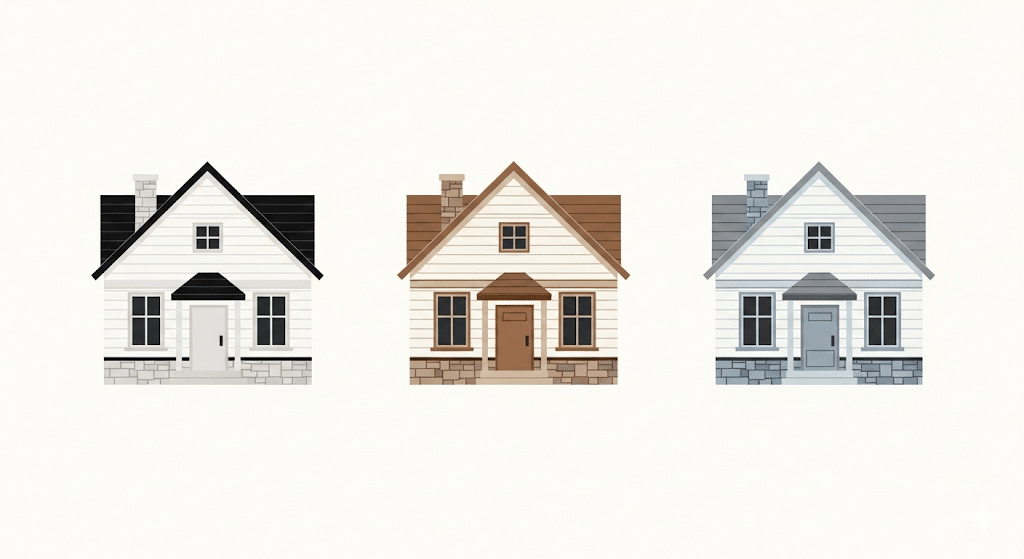
When you pair the right roof color with stone accents, magic happens. These combinations create visual depth and character that make white houses truly stand out in any neighborhood.
The key lies in understanding how colors work together and finding the perfect balance between contrast and harmony.
Some of the most eye-catching white houses combine roofing and stone accents in balanced ways:
- Black roof + pale stone = bold contrast
- Brown roof + warm stone = rustic charm
- Gray roof + cool stone = sleek and modern
Getting proportions right is key to making these combinations work effectively. Design experts often discuss how high to run stone on a house, since the placement of stone in relation to the roofline affects balance and visual flow.
- Color Temperature Matching: Warm roof colors (browns, terracotta) pair best with warm stone tones, while cool roof colors (grays, blues) complement cool stone shades.
- Contrast Guidelines: High-contrast combinations, such as black roofs with light stone, create drama, while similar tones offer subtle complexity.
- Visual Weight: Darker roofs make homes appear grounded, especially when balanced with lighter stone at the foundation level.
Mistakes to Avoid When Choosing a Roof Color
| Mistake | Why It’s a Problem | Better Approach |
|---|---|---|
| Not testing against siding and stone | Colors look different next to white siding or stone. | Place samples directly on your home exterior. |
| Following short-lived trends | Trendy shades can quickly date your home. | Choose timeless, versatile roof colors. |
| Skipping light checks | Colors shift in morning vs. evening light. | View samples at different times of day. |
| Picking only a personal favorite | Unusual choices may hurt resale value. | Balance taste with broad buyer appeal. |
Pro Tips Before Deciding
Making the right roof color choice requires more than just picking your favorite shade. These practical steps help you see how colors will actually look on your home and perform in your specific location.
- Use visualization tools: Preview colors digitally on your home style to avoid costly mistakes.
- View real samples: Place shingle boards against your siding in morning and afternoon light to see true color variations.
- Ask for expert input: Roofers and designers can guide you toward shades that have been proven to perform well in your region.
Final Call
The best roof colors for a white house range from classic black and gray to earthy browns, terracotta, and even bold navy or green.
Each offers its own personality and curb appeal impact that can make your home stand out.
When you align your roof choice with architecture, climate, and exterior accents, your white house gains both beauty and value. The right combination creates lasting appeal that benefits you today and when it’s time to sell.
Remember to test samples in different lighting conditions, consider your local weather, and think about how colors complement existing stone or trim elements.
What roof color are you considering for your white house? Share your thoughts in the comments below. We’d love to hear about your color choices and see photos of your results!
